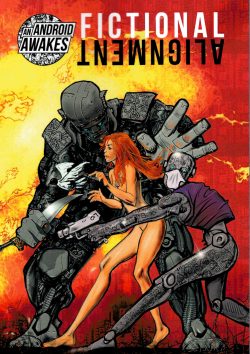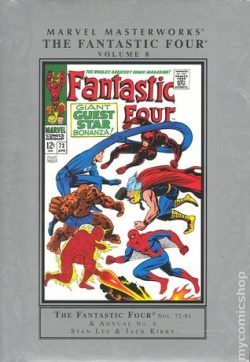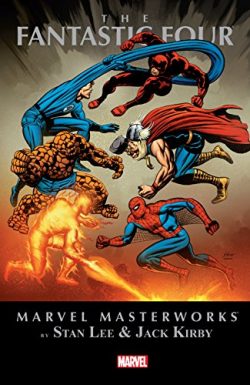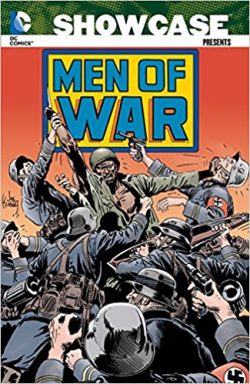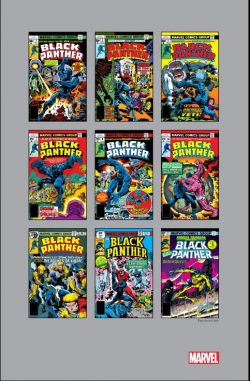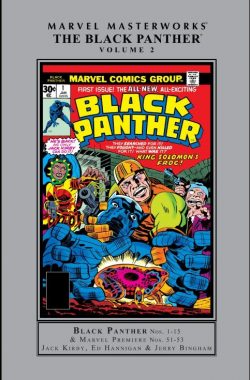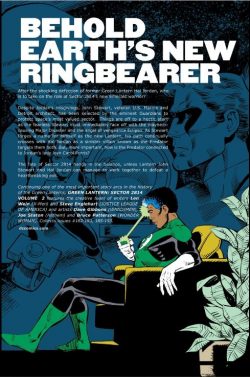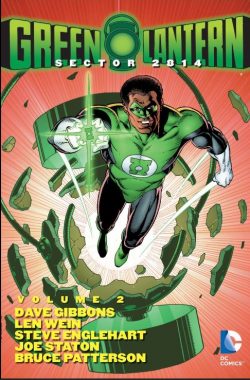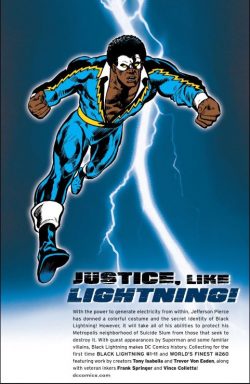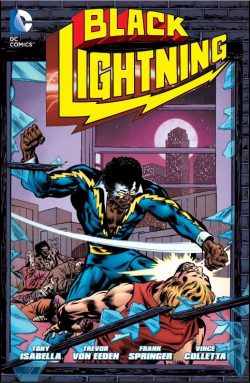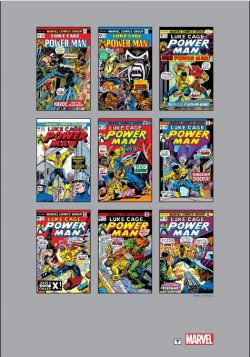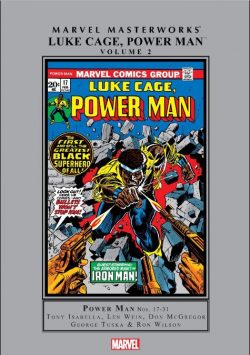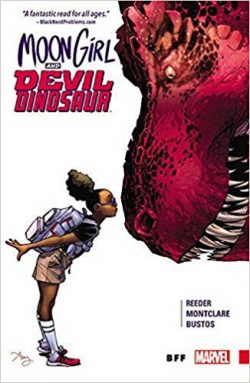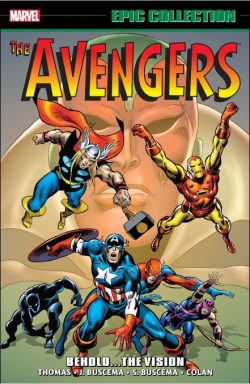
By Roy Thomas, John Buscema, Barry Windsor-Smith, Sal Buscema, Gene Colan, Frank Giacoia, Howard Purcell & various (Marvel)
ISBN: 978-0-7851-9165-0
One of the most momentous events in comics history came in the middle of 1963 when a disparate gang of heroic individual banded together to combat an apparently out of control Incredible Hulk.
The Avengers combined most of the company’s fledgling superhero line in one bright, shiny and highly commercial package. Over the intervening decades the roster has unceasingly changed, and now almost every character in the Marvel multiverse has at some time numbered amongst their colourful ranks…
The Avengers always proved that putting all one’s star eggs in on single basket can pay off big-time. Even when all Marvel Royalty such as Thor, Captain America and Iron Man are absent, it merely allows the team’s lesser lights to shine more brightly.
Of course, the founding stars always regularly feature due to a rotating, open door policy ensuring most issues include somebody’s fave-rave. After instigators Stan Lee & Jack Kirby moved on, the team prospered under the guidance of Roy Thomas who grew into one of the industry’s most impressive writers, guiding the World’s Mightiest Heroes through a range of adventures ranging from sublimely poetic to staggeringly epic…
This fourth trade paperback compilation – also available in eBook iterations – collects Avengers #57-79, plus a solo saga starring a soon to be recruited addition from Marvel Super-Heroes #17 collectively covering October 1968 to August 1970.
This all-action extravaganza opens with the introduction of a new character with John Buscema and George Klein illustrating the 2-part introduction of possibly the most intriguing of all the team’s roster.
‘Behold… the Vision!’ and the concluding ‘Even an Android Can Cry’ retrofitted an old Joe Simon & Jack Kirby hero from the Golden Age (an extra-dimensional mystery-man) into a high-tech, eerie, amnesiac artificial man with complete control of his mass and density: playing him as the ultimate outsider, lost and utterly alone in a world that could never, never understand him.
After attacking the team but inexplicably stopping short of killing the human heroes, the then-nameless “Vision†led the Avengers into astounding adventure as the enigma of his creation unfolded.
It was revealed that he/it had been built by the relentless, remorseless robotic Ultron-5 to destroy the Avengers and especially his own creator Henry Pym. Furthermore, the mechanical mastermind had used the brain pattern of deceased hero and fallen Avenger Wonder Man as a cerebral template. Perhaps that was a mistake since the synthetic man apparently overruled his programming to help defeat his maniac maker…
Avengers #59 and 60, ‘The Name is Yellowjacket’ and ‘…Till Death do us Part!’ (the latter inked by Mike Esposito moonlighting as Mickey DeMeo) saw Goliath and the Wasp finally wed after the heroic Dr. Pym is seemingly replaced by a new insect-themed hero, with a horde of heroic guest-stars and the murderous Circus of Evil in attendance, followed here in swift succession by another of Marvel’s increasingly popular and commonplace crossovers.
‘Some Say the World Will End in Fire… Some Say in Ice!’ concluded a storyline from Doctor Strange #178 wherein a satanic cult unleashed Norse demons Surtur and Ymir to destroy the planet, with occasional ally the Black Knight adding his recently acquired mystic prowess to the defence of the realm.
He hung around for ‘The Monarch and the Man-Ape!’ in Avengers #63; a brief and interlude in hidden nation Wakanda and a brutal exploration of African Avenger Black Panther‘s history and rivals – most notably a usurping super-strong trusted regent declaring himself M’Baku the Man-Ape…
The next issue began a 3-part tale illustrated by Gene Colan & Klein whose lavish humanism was intriguingly at odds with the team’s usual art style. ‘And in this Corner… Goliath!’, ‘Like a Death Ray from the Sky!’ and ‘Mightier than the Sword?’ (the final chapter inked by Sam Grainger) was part of a broader tale; another early crossover experiment intersecting with both Sub-Mariner and Captain Marvel issues #14, wherein a coterie of cerebral second-string villains combined to conquer the world by stealth…
Within the Avengers portion of proceedings, Hawkeye revealed his civilian identity to be circus performer Clint Barton and recounted his origins before forsaking his bow and trick-arrows to become a size-changing hero and subsequently adopting the now-vacant name Goliath. Along the way the team scotched a terror satellite scheme cooked up by Egghead and enforced by the sinister Swordsman…
Another triple-chapter story-arc followed; giving new kid Barry (Winsor) Smith a chance to show just how good he was going to become.
Inked by the legendary Syd Shores, ‘Betrayal!’ (#66) reveals how the development of new super metal Adamantium triggers a long-dormant back-up program in the Vision who is slavishly compelled to reconstruct his destroyed creator…
As ‘We Stand at… Armageddon!’ (Smith & Klein opens), adamantium-reinforced Ultron-6 is moments away from world domination and the nuking of New York when a now truly independent Vision violently intercedes before dramatic conclusion ‘…And We Battle for the Earth’ (illustrated by young Sal Buscema & Sam Grainger) sees the team – augmented by Thor and Iron Man – prove that the only answer to an unstoppable force is an unparalleled mind…
In Avengers #69 ‘Let the Game Begin’ (Thomas, Sal Buscema & Grainger) finds the team – Captain America, Yellowjacket, Wasp, Goliath, Vision and Thor – called to the hospital bedside of ailing Tony Stark just in time to prevent his abduction by the grotesque and gargantuan Growing Man. After battling boldly against the unbeatable homunculus, the team are summarily and collectively snatched into the future by old enemy Kang the Conqueror who co-opts the team to act as pieces in a cosmic chess-game with an omnipotent alien called the Grandmaster.
If the Avengers fail – Earth would be eradicated from the cosmos…
Issues #70 and 71 began a fertile period for writer Thomas as he introduced two new teams who would, in the fullness of time, star in their own stellar series: Squadron Supreme and The Invaders.
‘When Strikes the Squadron Sinister!’ sees the Avengers returned to their own time to battle a team of deadly villains (mischievously based on DC’s Justice League of America) before ‘Endgame!’ – guest-starring the Black Knight – finds the Vision, Black Panther and Yellowjacket dispatched to 1941 to clash with the WWII incarnations of the Sub-Mariner, Human Torch and Captain America…
After foiling Kang’s ambitions and surviving his betrayal the team victoriously return to the present where Avengers # 72 offered a guest-appearance from Captain Marvel and Rick Jones.
‘Did You Hear the One About Scorpio?’ also debuts malignantly menacing super-mob Zodiac, after which ‘The Sting of the Serpent’ (illustrated by Frank Giacoia & Grainger) pits the Panther against seditious hate-mongers determined to set New York ablaze, leading to a spectacular and shocking clash between Avengers and the Sons of the Serpent in ‘Pursue the Panther!’; the first in a string of glorious issues illustrated by the artistic dream team of John Buscema & Tom Palmer.
Long-missing mutant Avengers Quicksilver and the Scarlet Witch resurfaced in #75, desperate to warn of and stave off extra-dimensional invasion and nuclear Armageddon by Conan prototype Arkon the Magnificent in ‘The Warlord and the Witch!’ before the staggering threat is finally extinguished in ‘The Blaze of Battle… the Flames of Love!’
As the tone of the times shifted and other titles entered a period of human-scaled storytelling dubbed “Relevancyâ€, a far more mundane and insidious menace manifested as billionaire financier Cornelius Van Lunt manoeuvres to bankrupt Avengers sponsor Tony Stark, compelling the team to become the mystery magnate’s ‘Heroes for Hire!’
With the end of the book fast approaching here, Sal Buscema popped in to pencil ‘The Man-Ape Always Strikes Twice!’ as the team are targeted by a coterie of vengeful villains competing to join a new league of evil, spectacularly culminating in a grand clash with the aforementioned anthropoid, Swordsman, Power Man, Living Laser and the Grim Reaper in ‘Lo! The Lethal Legion!’, which concluding chapter also heralded the artistic return of Big Brother John….
Chronologically adrift but adding plenty of bonus thrills, the comics adventures end for now with ‘The Black Knight Reborn!’ by Thomas, Howard Purcell & Dan Adkins from try-out title Marvel Super-Heroes #17 (November 1968). Here American part-time superhero Dane Whitman inherits an English castle and discovers through ghostly intervention that he is the last descendent of King Arthur’s trusty comrade Percy of Scandia – history’s first Black Knight and Merlin’s last resort against all forces of evil.
Gifted with a mystic ebony blade that can cut through anything, Dane readies himself to fight the good fight in modern times. He soon becomes painfully aware that the malign ghostly spirit of vile Modred is also abroad and empowering dupes such as French derelict Le Sabre with magical weapons to end his crusade before it can even begin…
Unceasingly enticing and always evergreen, these timeless sagas defined and cemented the Marvel experience and are a joy no fans of Fights ‘n’ Tights fiction should deny themselves or their kids.
© 1968, 1969, 1970, 2015 Marvel Characters, Inc. All rights reserved.

